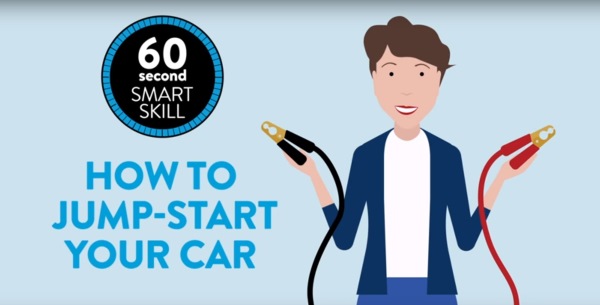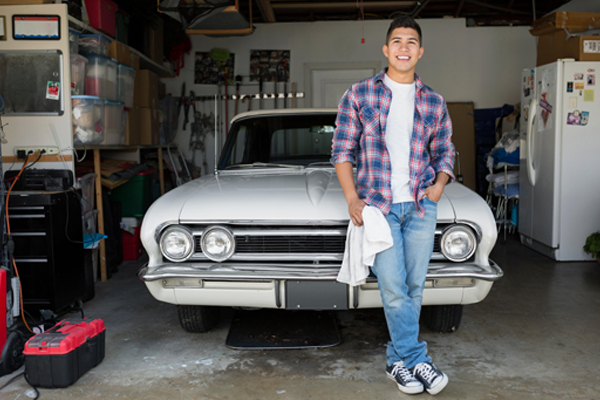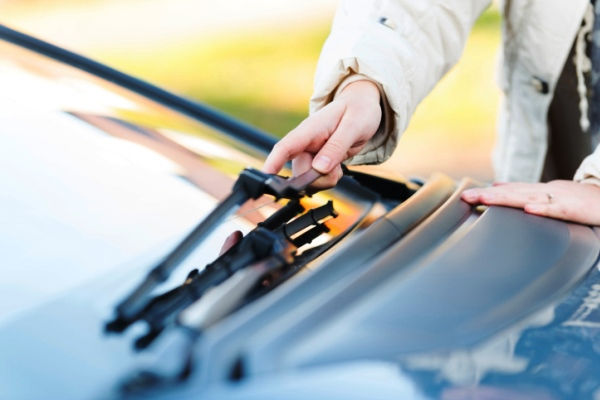Most of us spend a significant amount of time in our cars, whether it’s commuting or running errands or simply enjoying the road. But many of us don’t know the basics of vehicle maintenance or repair. With a little do-it-yourself spirit and a few basic tips, you can learn how to do most anything on a car.
First, find the owner’s manual for your vehicle. This is a high level guide to most of the major components, complete with troubleshooting suggestions for your particular make and model.
How To Jump Start A Vehicle
Keep the following in your car at all times:
- Jumper Cables: The longer, the better!
- Mechanic Gloves: Disposable gloves at the very least, but heavy duty offers more protection
- A Flashlight: Always handy to keep in your car!
- Paper Coveralls: Protection for your clothes – paint stores usually carry these
- Owner’s Manual: You can often find this in your car’s glovebox
To jump start your car, you will need to find someone with a vehicle to provide the jump to your dead battery. It is important to be safe and use sound judgment when seeking assistance from people you don’t know. Don’t accept help from anyone you don’t feel comfortable around, and be sure to phone a loved one to let them know exactly where you are and what’s going on.
Before you and your helper begin the jump-start process, here are a few words of caution:
- Read your owner’s manual, first. Your manufacturer may advise against jump starting a vehicle due to sensitive electronic circuitry.
- Don’t try to jump a frozen battery.
- Do NOT jump a battery that is cracked or leaking. This is very dangerous. You will need to purchase a new battery at this point, so call a tow truck or a friend that can help you out.
- Ensure that the battery isn’t dry. Check individual cells for fluid levels and add water accordingly. Check your owner’s manual for details and warnings.
- If there is corrosion (white or greenish powdery stuff) on the battery, try to clean it off with a wire brush, aluminum foil or anything but your hand as the chemicals can be damaging to your skin. Be sure you cover your nose and mouth to avoid inhaling the dust as it is a lung irritant.
- Once you begin the process of hooking the cables up NEVER allow any of the hook-up clamps to touch. Each person should hold an end of the cables and keep the two clips separate (one to each hand is a good idea).
Step-by-step Guide:
- Start by protecting your clothes and your hands with protective clothing or a blanket on the ground and gloves.
- Open the hood to your car. Sometimes when you “pop” the hood, you need to also release the latch. This can be found by running your fingers under the slightly open hood until you find a little lever to push on. Use the stick to prop the hood open while you work.
- Locate the battery. If you aren’t sure where to find the battery, your owner’s manual should provide instructions or a picture to guide you.
- Ensure that the donor car is parked close to yours and that it is turned off before you start.
- On the battery there are two post “terminals”. One is positive (+), usually red and one is negative (-), usually black.
- The positive terminal post (+ or red) should have a plastic cover that opens easily to expose the metal beneath. Keep in mind that when you begin to attach the cables to each component, you want it to be as solid as possible to ensure a safe and complete connection.
- Take a POSITIVE (red) clamp and attach it to the dead car’s positive terminal post (+ or red). The clamps should have metal teeth that help them grip the terminal post.
- Take the POSITIVE (red) clamp at the opposite end of the cables and attach it to the positive terminal post (+ or red) of the good, working battery. Their car should still be off!
- Next, take the NEGATIVE (black) clamp on that end and attach to the (-) terminal of the good, working battery.
- Take the final NEGATIVE (black) clamp and attach it to a non-painted metal surface on the main engine block of the car that is being jump-started (yours). A good metal surface could be a metal nut or bolt and farther away from the battery is better to allow for solid grounding.
- At this point, once all of the connections have been secured, start the donor car. After a few minutes, try to start your car. If your car won’t start, then wait several more minutes and try again.
- If this doesn’t work, stop. Working in reverse order, unhook each of the clamps and thank the owner of the donor car. It’s time to call for professional help.
- When the dead car is started, check the battery light on the instrument panel. If it is on, this may mean that the alternator is not charging the battery and the driver should not run the vehicle very long. If this is the case, call for professional help.
- If your car does start, let it run for a few minutes to help charge the battery further.
- Unhook the clamps in the reverse order of how you put them on. Be sure to drive your car for about 30 minutes before stopping again so the battery can continue to charge. Otherwise, you might need another jump start.
For the true do-it-yourselfer, look into a Jump Start Box or Jump n’ Carry. These small boxes run about $150, but they can provide you with a solo jump start regardless of where you are. Be sure to read the details and your owners manual to ensure this is an option for your vehicle.
Print this article out and keep in your glove compartment for easy reference.
A dead battery is just one of the things GEICO’s Emergency Roadside Service can help you with if you get stranded. Add it to your auto insurance policy today for just pennies a day per vehicle.
Next article: How to Check Tire Pressure










Lalaloopai says,
I know how to jump start your car, so don’t mess with me. 😀
assumita says,
Great help
Joan Uhlar says,
Thank you for the notes on how to use jumper cables. I am a widow and have always been unsure about the proper technique. I understand the process with your clear instructions.
Charlotte says,
Buy a Wee go and you will never worry again
Lisa says,
Should never start the dead car while still trying to charge the battery when the donor car is still connected and running. That can damage the battery on the donor car and now you just screwed the good Samaritan that is trying to help you. Should leave the dead car off and allow time for the battery to charge. Then turn off the donor car, disconnect the cables, then try starting the car that was dead
Michael Smith says,
If you have had luck with that, you were indeed lucky. Because it’s not only the battery that is providing the charge to the dead car. It’s also the alternater tha provided power to the dead battery. Look it up you have a commuter in your hand.
Jim Jay says,
I never new that. I always see people leaving the car running.
Yushau Emmanuel says,
Its nice of you to have publish such a useful information as this. So anytime my vehicle is giving me problem, I will be glad to visit this site. You know, I tried this now and it work and its kind of a “oohh, so its this small thing”. So thanks…
asenet says,
Articles are great fyi for myself i always c other people doing this i haven’t came across jump starting a car but now atleast know the how to and can just refer myself to your website if needed thank you
Lora Evans says,
Thanks good info.
Angel Burgos says,
wonderfull keep giving this good information to us, very please with it. Thanks
MaryAnn says,
Thanks for this vital and helpful information, it can be a lifesaver when your battery is dead!
Daylin says,
Great info! Thanks
Denise says,
Good information
Deady Batry says,
Thanks.
Angiena Scott says,
Awesome tips! I have often faces this type of situations while traveling with my family and could not found any way for solving my problem. thank you for sharing such a useful tips with us. I really need this type of tips for my car. The guide steps are really helped me a lot and i have got lots of vital information’s through your blog. Keep your post always unique and nice.
Deanna R. Jones says,
Thanks for the tips! My car was stuck last night in a parking lot, so I needed it to be jump started. I wasn’t sure how to jump start a car, but someone was nice enough to use their cables to get it started up for me. These tips should help me know what to do the next time this happens. Now I feel like I have a better understanding of what the person with the cables were doing now that I know that the terminal post that the clamps attach to is important to know.